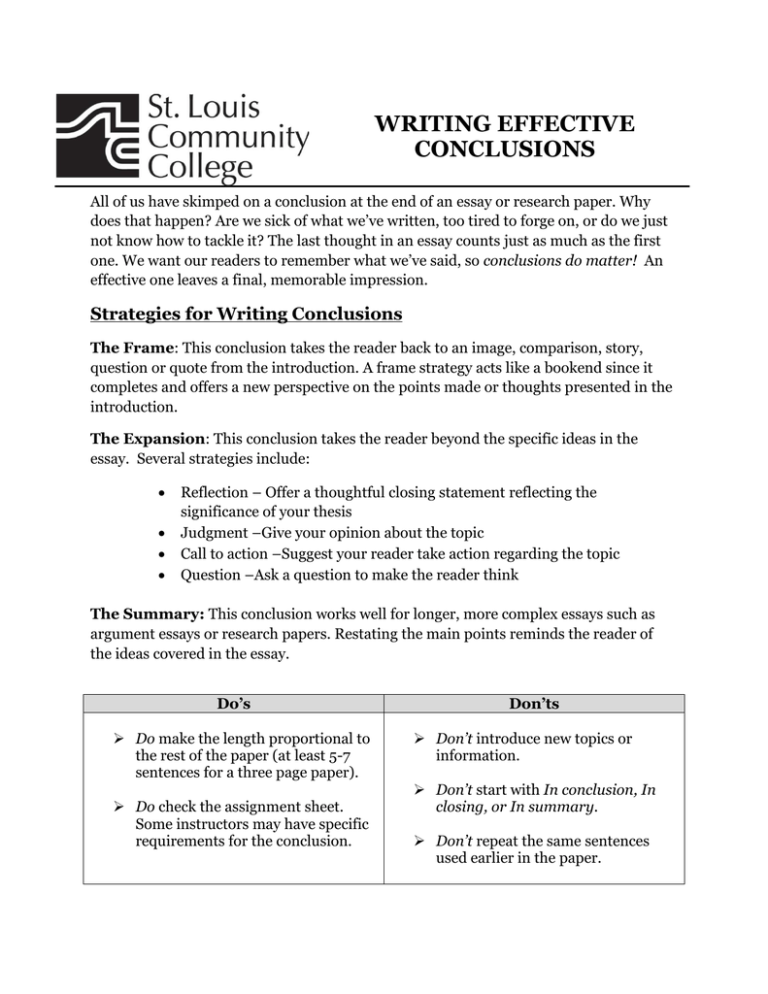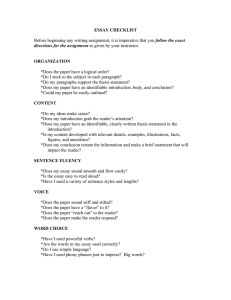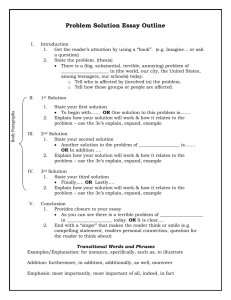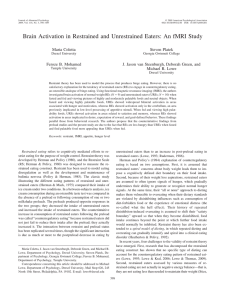WRITING EFFECTIVE CONCLUSIONS
advertisement

WRITING EFFECTIVE CONCLUSIONS All of us have skimped on a conclusion at the end of an essay or research paper. Why does that happen? Are we sick of what we’ve written, too tired to forge on, or do we just not know how to tackle it? The last thought in an essay counts just as much as the first one. We want our readers to remember what we’ve said, so conclusions do matter! An effective one leaves a final, memorable impression. Strategies for Writing Conclusions The Frame: This conclusion takes the reader back to an image, comparison, story, question or quote from the introduction. A frame strategy acts like a bookend since it completes and offers a new perspective on the points made or thoughts presented in the introduction. The Expansion: This conclusion takes the reader beyond the specific ideas in the essay. Several strategies include: Reflection – Offer a thoughtful closing statement reflecting the significance of your thesis Judgment –Give your opinion about the topic Call to action –Suggest your reader take action regarding the topic Question –Ask a question to make the reader think The Summary: This conclusion works well for longer, more complex essays such as argument essays or research papers. Restating the main points reminds the reader of the ideas covered in the essay. Do’s Do make the length proportional to the rest of the paper (at least 5-7 sentences for a three page paper). Do check the assignment sheet. Some instructors may have specific requirements for the conclusion. Don’ts Don’t introduce new topics or information. Don’t start with In conclusion, In closing, or In summary. Don’t repeat the same sentences used earlier in the paper. The following example represents the bookend strategy. It begins in the introduction with a descriptive hook and includes a thesis statement. The conclusion completes the bookend strategy. Competitive Eating [Introduction] When we think about professional athletes, our minds conjure images of sweaty men and women running through rows of tires, muscled bodies lifting weights, and the intense looks of players on their fiftieth wind sprint. Just as in the world of professional sports, the world of competitive eating also features great athletes. Competitive eating, or “speed eating,” is an activity in which participants compete against each other to consume large quantities of food in a short period of time. Contests are typically less than 15 minutes, with the person consuming the most food being declared the winner. Many professional competitive eaters undergo rigorous personal training in order to increase their stomach capacity, speed, and efficiency with various foods. Competitive eaters who want to become world champions must actually train and practice their technique in order to succeed in competition (Garza 146). [Conclusion] Aside from these training techniques and game-time tactics, competitive eating is largely a matter of willpower. Contestants must fight their gag reflexes and their stomach’s natural adverse reaction to dumping such a large amount of food into it so quickly. But like any successful athlete, the men and women who want to be world-champion professional competitive eaters must work hard to train their bodies and minds while preparing for the next challenge (Garza 148). Garza, Manuel. “Competitive Eating.” Nexus: A Rhetorical Reader for Writers. Kim Flachmann and Michael Flachmann. Boston: Pearson, 2012. 146-148. Print. This document was developed by the College Writing Center STLCC-Meramec Created 2014 by TF/KM





